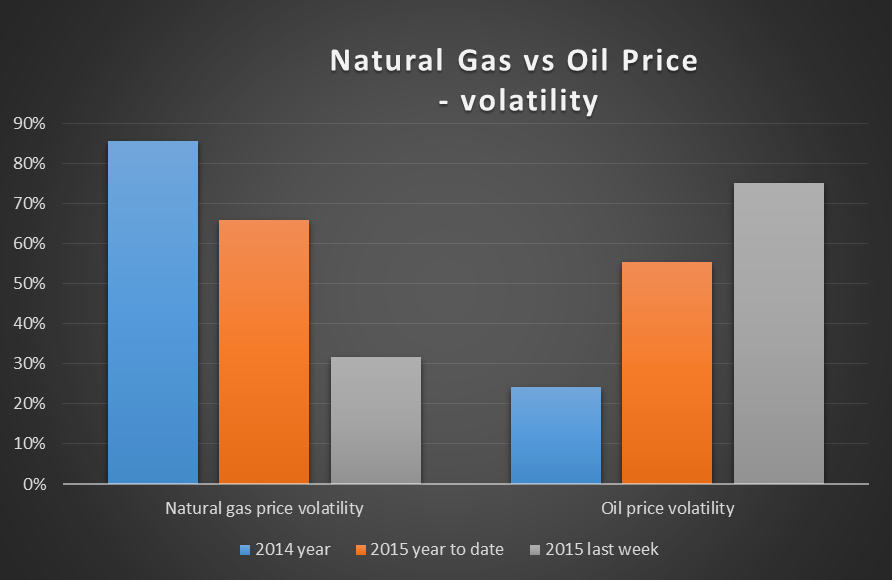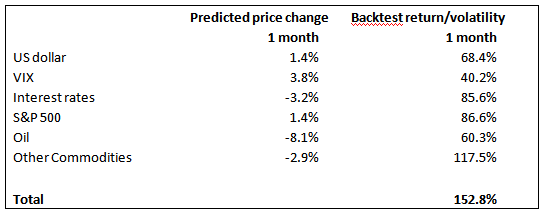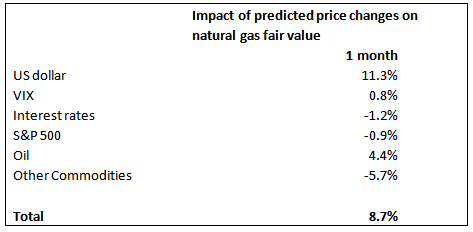At around $2.55 currently, natural gas is 39% above the low end, and 67% below the high end, of its six year trading range of between $1.83 and $7.78.
Amongst a general downturn in commodity prices this year, natural gas has been the hardest hit -

As shown below, the volatility of the natural gas price has been declining this year, and last week was below the oil price volatility which has been on the rise. This is against a background of an overall flat oil price (beginning of 2015 to now) but weak natural gas price.

We have developed a fair value of natural gas based on a multiple regression analysis of its price on 22 driver variables including interest rates, stock indices, other commodities and exchange rates. The database is six years of daily prices.
The elasticity of the natural gas fair value to groups of driver variables is shown in the graph below.

As can be seen, the commodity is highly positively correlated to the US Dollar. This contrasts with the oil price which has shown negative correlation to USD.
We have also developed a prediction model based on the lead given by the change in the Baltic Dry Index (BDI) of raw material shipping freight rates. This index is widely seen as a leading indicator of world economic growth, with increases viewed as bullish and conversely.
Based on the BDI lead, it is possible to develop price predictions for a range of commodities, interest rates, stock indices and currencies. These can be combined with the fair value model elasticities shown above to give a predicted movement in the natural gas priceover the next month. We also back test the prediction models to assess their value in a trading environment (taking a long position when the predicted price change is positive and a short position when negative).
The predicted price changes for the next month, and the annualized return/volatility ratio over the last six years from trading the predictions, are shown in the following table –

The return/volatility from trading all the predictions combined (of around 150%) compares with that applying to the S&P 500 over the same period, of 102.2%. We consider this to be reasonably robust given the period commences in mid-2009, around the start of the latest bull market in US stocks.
Our predicted movement in the natural gas price for the next month is shown in the table below. The contribution of each driver variable to the overall increase is also shown.

As can be seen from the above two tables, our positive view on the US dollar drives a positive view on natural gas over the next month, more than offsetting our bearish view on commodities.
We also used the BDI model to directly forecast the natural gas price movement for the next month. A changeof -2.7% resulted, at variance with the signal given above. The six year back test return/volatility ratio from trading this model was 70%.
Significant diversification benefits could be realized from allocating a component of a US stock portfolio tracking the S&P 500 to natural gas traded using the BDI leading indicator as outlined in this article. For a 5% allocation, the ratio would have improved from 102.2% to 113.7% for the last six years.
